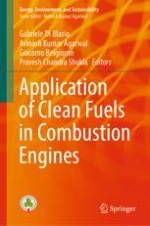This book discusses the impact of fuels characteristics and their effects on the combustion processes in internal combustion engines. It includes the analysis of a variety of biofuels (alcohol fuels and biodiesel) and biogases (natural gas, hydrogen, etc.), providing valuable information related to consequent effects on performance and emissions. The contents focus on recent results and current trends of fuel utilization in the transport sector. State-of-the-art of clean fuels application are also discussed. Thighs book will be of interest to those in academia and industry involved in fuels, IC engines, engine instrumentation, and environmental research.
